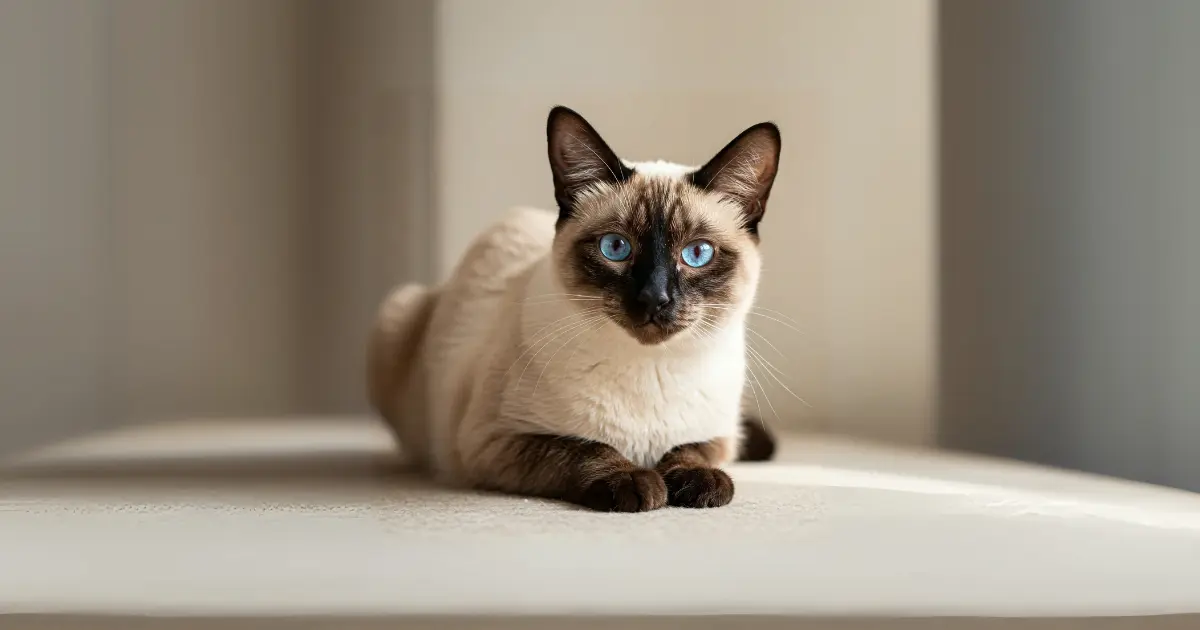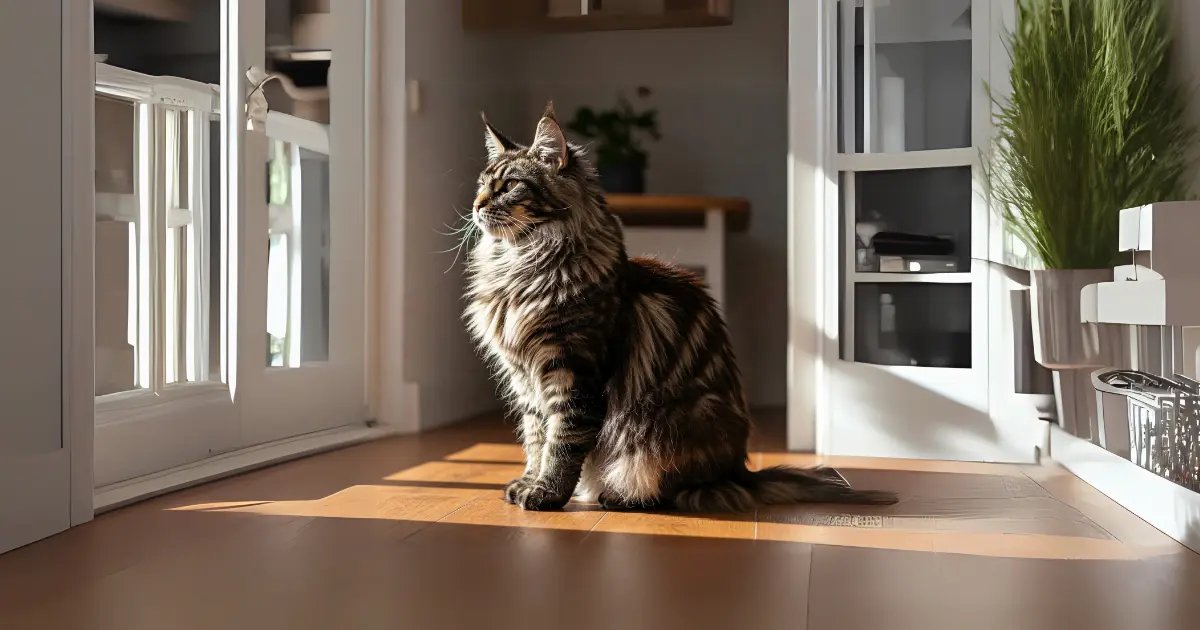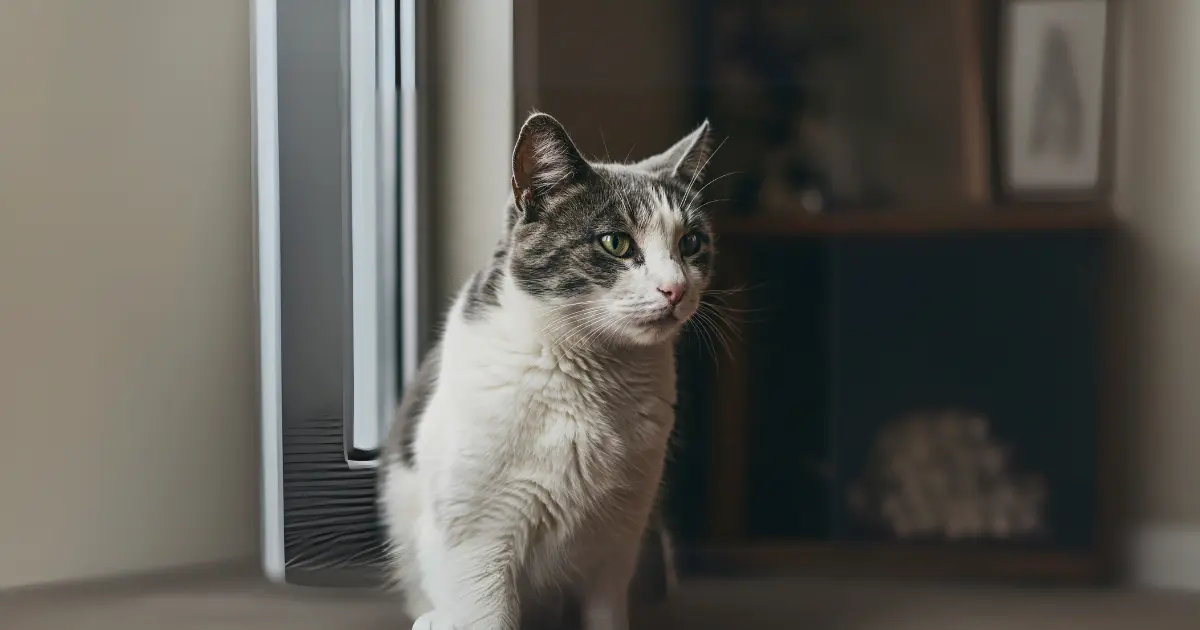Understanding Your Cat’s Fur Color Changes
Published: 26 Feb 2025
Have you ever noticed your cat’s fur changing color and wondered why? You’re not alone. As a cat parent, I’ve seen this happen with my feline friends, and it’s one thing that can surprise you! Luckily, most of these changes are natural and nothing to worry about.

Cat fur color change can be fascinating to see how a cat’s coat can shift over time, whether because they’re growing older, responding to the seasons, or their fur evolving as they age. Let’s dive into why these changes happen and how you can care for your cat as they go through it.
Table of Contents
What Affects a Cat’s Fur Color?
Genetics and Your Cat’s Coat
A cat’s fur color is determined by genetics—the same way we inherit traits like eye color or hair texture. The gene pool passed down from their parents decides everything about their coat, from color to pattern.
For example, you might notice your cat’s fur turning darker or lighter over time. This is all because of the genetic mix they inherited from their parents.
Example: “I adopted a calico cat a few years ago, and I remember being amazed at how her fur looked like a little patchwork quilt. She had white, black, and orange spots, and her colors slowly changed as she grew. I realized it was just how her genetics worked!”
Common Cat Fur Patterns
- Tabby: These are the cats with stripes, spots, or swirls, often in shades of brown or gray.
- Solid: Some cats have just one color, like black or white.
- Tortoiseshell: This pattern mixes black and orange with some occasional white.
- Calico: Typically, this includes a combination of white, black, and orange.

Why Does My Cat’s Fur Change?
Genetics and Growth
Here’s an interesting tidbit: when kittens are born, their fur is often lighter than it will be once they’re older. As they grow, their fur darkens or changes entirely due to inherited genetics from their parents.
Example: “When my kitten Oliver was born, his fur was soft, creamy. When he turned one, his coat had darkened into a rich brown, just like his dad’s. It was fascinating watching that transformation happen!”
Age-Related Fur Changes
Like humans, we start noticing a few grey hairs as we age, but cats do the same. Older cats may see their coats turn grey or white around their faces or paws. It’s completely normal and part of the natural aging process. This happens because their body produces less melanin, the pigment that gives their fur its color.
Example: “My cat Misty, now 14, has started developing little silver streaks in her coat. At first, I thought something was wrong, but it’s just her getting older and her fur changing, just like how people get gray hair!”
Seasonal Changes in Coat Color
If you’ve ever had an outdoor cat, you’ve probably seen them go through a thick winter coat and a lighter summer coat. Cats living outdoors often grow heavier, darker fur to stay warm in the cold months, and when the temperature rises, their coats lighten and shed to help them stay calm.
Example: “Last winter, I saw Socks, my outdoor cat, fluff up like a little puffball as the weather turned chilly. By spring, his coat was much lighter, and I could tell he was shedding the extra warmth for the summer.”
Health-Related Fur Changes
Sometimes, fur changes can be related to health. If your cat’s fur suddenly becomes patchy, overly dry, or dull, it could be a sign of something that needs attention, like a hormonal imbalance or poor diet. Maintaining a calm and loving environment is crucial, especially for affectionate cats, who thrive on human interaction and emotional stability.
Example: “A few months ago, I noticed Luna’s coat wasn’t as shiny as it used to be, and she seemed to be shedding a lot. I took her to the vet, and we found out she had a mild thyroid issue. After getting treatment and switching her food, her coat started looking healthy again.”
Temperature-Dependent Fur Color (For Some Breeds)
Certain breeds, like the Siamese, have a fascinating trait where their fur color changes with temperature. Their cooler body parts (like ears and paws) are darker, while their warmer areas (like the belly) are lighter. This is a result of a temperature-sensitive gene.
Example: “When I first met a Siamese cat, I was amazed by how their ears, tail, and paws looked almost like they were dipped in chocolate. Their unique fur color is all because of their genetic makeup and the temperatures they experience!”

How to Care for Your Cat’s Changing Fur
Regular Grooming is Key
If your cat’s coat is changing or shedding more, grooming can make a big difference. Regular brushing helps reduce tangles and prevent mats (especially in long-haired breeds), Regular grooming is important for long-haired cats, as they can develop mats that might affect how their fur changes over time. and keep the fur shiny and healthy. It’s a good bonding activity, too!
Tip: “Trust me—if you have a long-haired cat, you’ll want to invest in a good grooming brush. My Persian cat, Fluffy, loves the attention, which helps keep his fur from getting all knotted up. It’s also a great way to check for skin issues or mats.”
Watch Their Diet
Diet has a major impact on the health of your cat’s fur. If your cat isn’t getting the right nutrients, its coat might look lackluster or feel different to the touch. Vital nutrients like Omega-3 fatty acids, biotin, and protein are important to keep a shiny and healthy coat. Learn more about cat nutrition and how it impacts your cat’s fur health.
Tip: I noticed a difference when I added fish oil to my cat’s diet. It’s like a little magic for keeping their coat soft and smooth. If you’re unsure what to add, check with your vet for the best recommendations.
Monitor for Health Issues
If your cat’s fur starts changing unusually (like sudden patches of baldness, excessive shedding, or a dull texture), it could be time to visit the vet. Issues like hypothyroidism or stress can sometimes cause these changes.
Tip: “I’ve had moments where I thought a change in fur color was nothing serious but then noticed it was linked to health. If you notice anything unusual, it’s always better to be safe and get your cat checked out by a professional.”
Conclusion
A cat’s fur changing color is usually a natural part of life. It can happen as they age, with the seasons, or just as they grow. There’s nothing to worry about most of the time, but if something feels off or seems unusual, a quick chat with your vet can give you peace of mind. Your cat’s coat reflects their overall health, and keeping an eye on it is another way to show your furry friend how much you care.
Has your cat’s fur color changed over time? Do you have any fun stories or tips to share? Let me know in the comments!
For more information on keeping your cat healthy and happy beyond their fur, check out this helpful guide on cat health care tips from the ASPCA. Remember, a healthy cat is a happy cat, and their fur is just one part of their overall well-being.
Frequently Asked Questions About Cat Fur Color Changes
Is it normal for a cat’s fur to change its color?
Yes, it’s normal! Cats can experience color changes as they age, changing seasons, or due to genetic factors. However, sudden or extreme color changes could indicate something that needs attention, so it’s always worth checking with your vet.
Can my cat’s diet cause changes in their fur?
Definitely! If your cat isn’t eating a well-balanced diet, it can affect their fur. Ensuring they get the proper nutrients, like omega-3 fatty acids, can help keep their coat in great shape.
Do all cats experience fur color changes?
Not every cat experiences noticeable fur color changes, but many cats see some shift in their coat as they age, shed, or grow into adult fur. However, a vet check-up is a good idea if the changes are drastic or accompanied by other symptoms.

- Be Respectful
- Stay Relevant
- Stay Positive
- True Feedback
- Encourage Discussion
- Avoid Spamming
- No Fake News
- Don't Copy-Paste
- No Personal Attacks



- Be Respectful
- Stay Relevant
- Stay Positive
- True Feedback
- Encourage Discussion
- Avoid Spamming
- No Fake News
- Don't Copy-Paste
- No Personal Attacks





